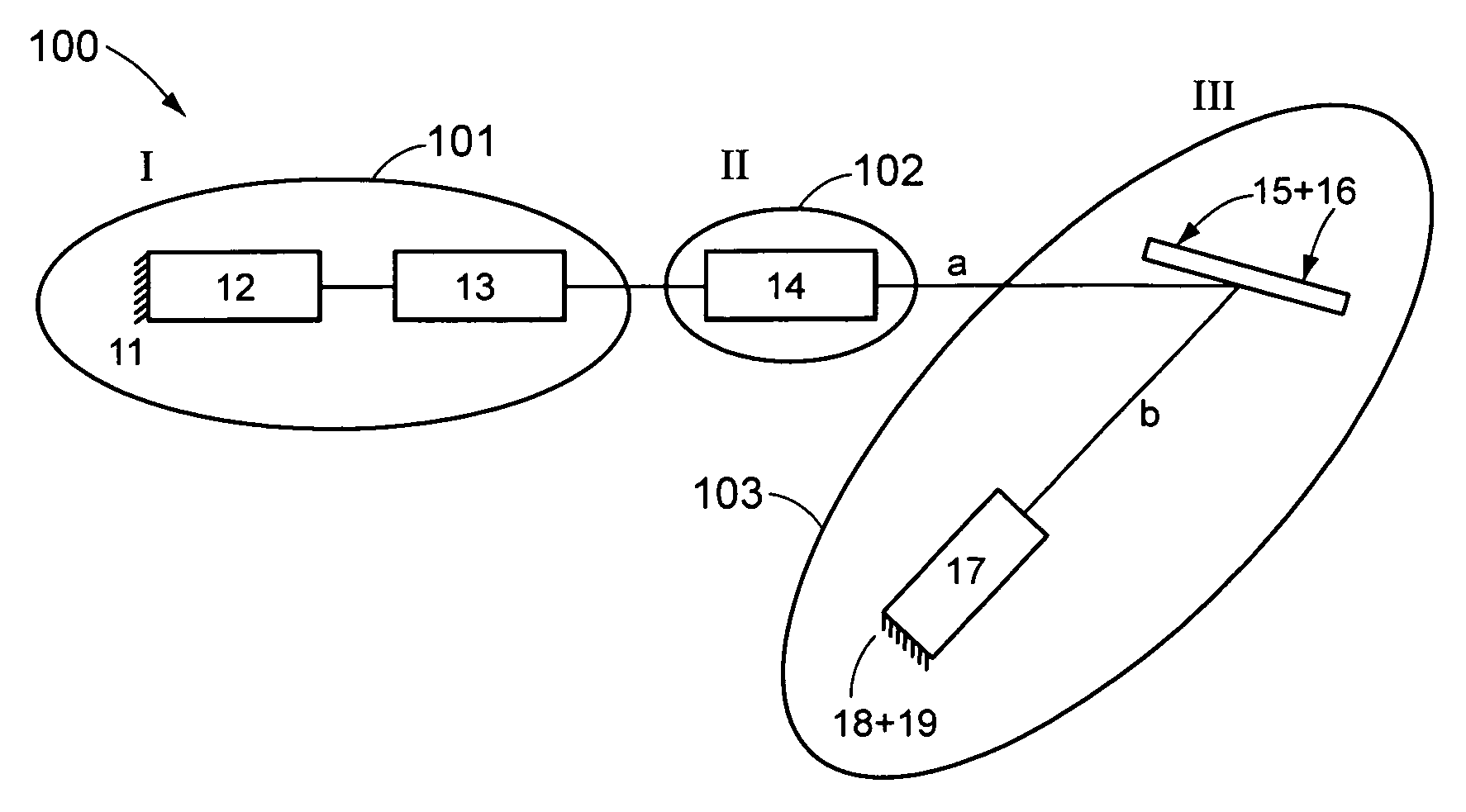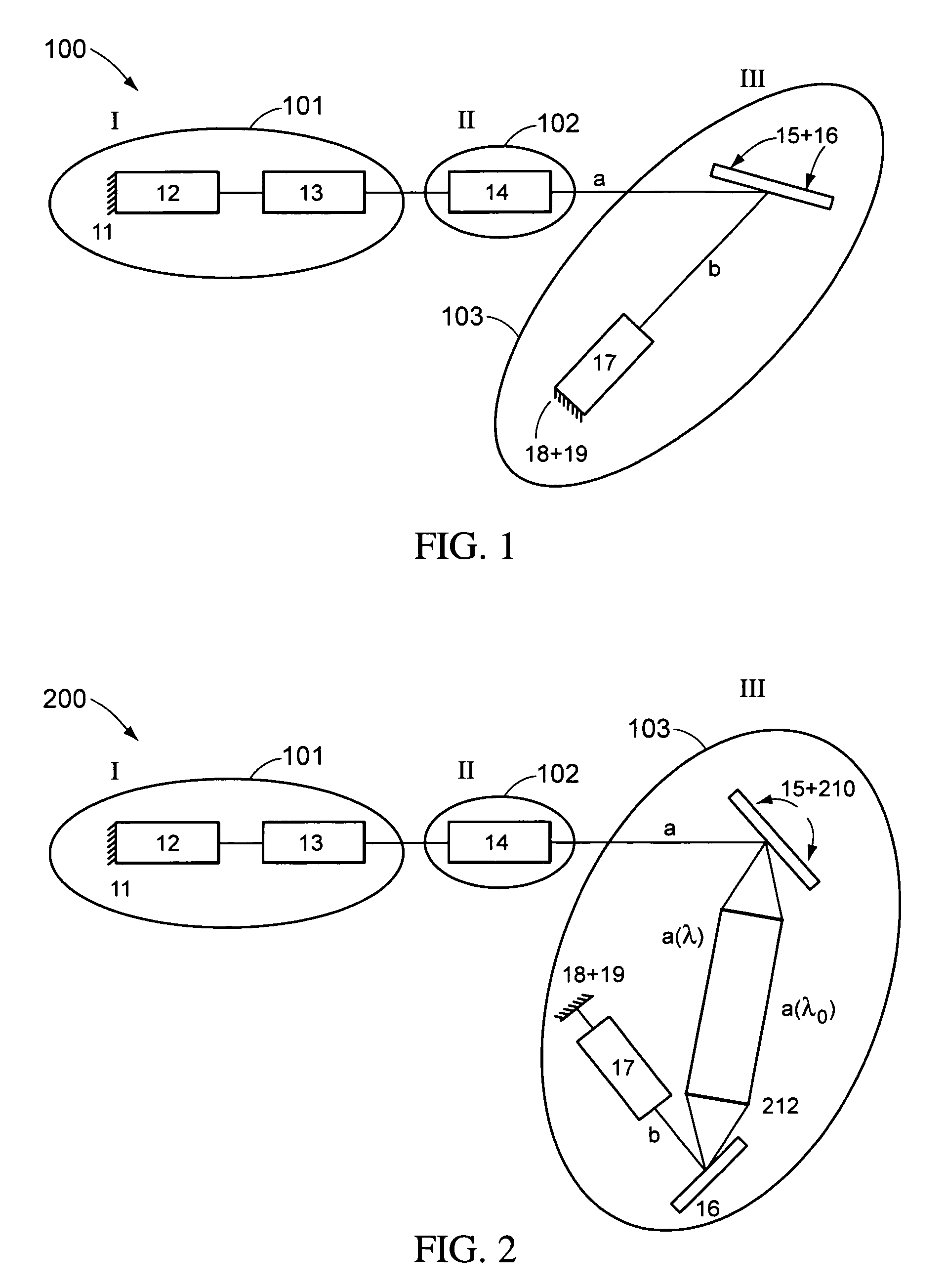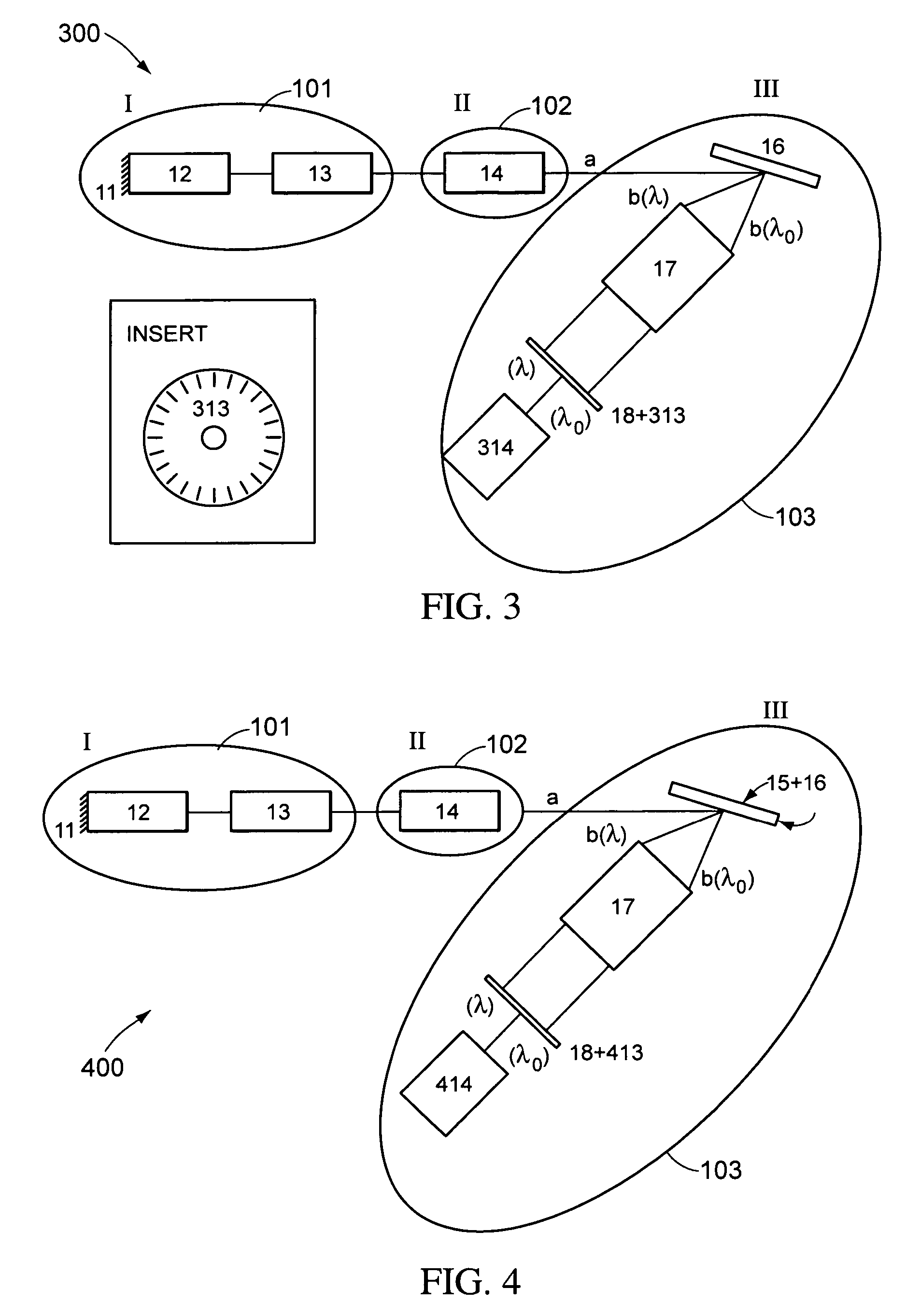Compact multimode laser with rapid wavelength scanning
a multi-mode laser and wavelength scanning technology, applied in semiconductor lasers, laser details, optical resonator shape and construction, etc., can solve the problems of inability to achieve continuous sweeping of output wavelength, inability to achieve syntune lasers with significant manufacturing infrastructure, and inability to achieve new wavelength implementation. , to achieve the effect of sufficient coherence length and large scanning ra
- Summary
- Abstract
- Description
- Claims
- Application Information
AI Technical Summary
Problems solved by technology
Method used
Image
Examples
Embodiment Construction
[0031]In accordance with some embodiments of the present invention, a tunable laser system that provides more than 5 mW of average optical power delivered from a single mode optical fiber, a dynamic coherence length of greater than about 2 mm, a tuning range (measured at the 99% power points) of approximately 5% of the center wavelength when operating at a center wavelength of, for example, about 850 nm, and approximately 10% of the center wavelength when operating at a center wavelength of, for example, about 1330 nm, and a tuning speed that is continuously variable from 0 to about 2,000,000 nm / s is presented. In some embodiments, additional discrete increases in tuning speed up to about 10,000,000 nm / s can also be obtained with the upper limit on the tuning speed being limited by the availability of appropriate high speed scanners or high speed tunable optical filters. In some embodiments, the polarization state of laser light emitted from the laser is linearly polarized and highl...
PUM
 Login to View More
Login to View More Abstract
Description
Claims
Application Information
 Login to View More
Login to View More - R&D
- Intellectual Property
- Life Sciences
- Materials
- Tech Scout
- Unparalleled Data Quality
- Higher Quality Content
- 60% Fewer Hallucinations
Browse by: Latest US Patents, China's latest patents, Technical Efficacy Thesaurus, Application Domain, Technology Topic, Popular Technical Reports.
© 2025 PatSnap. All rights reserved.Legal|Privacy policy|Modern Slavery Act Transparency Statement|Sitemap|About US| Contact US: help@patsnap.com



